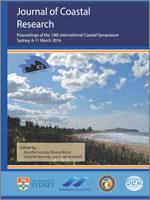Meynecke, J-O. and Meager, J., 2016. Understanding strandings: 25 years of humpback whale strandings (Megaptera novaeangliae) in Queensland, Australia In: Vila-Concejo, A.; Bruce, E.; Kennedy, D.M., and McCarroll, R.J. (eds.), Proceedings of the 14th International Coastal Symposium (Sydney, Australia). Journal of Coastal Research, Special Issue, No. 75, pp. 897–901. Coconut Creek (Florida), ISSN 0749-0208.
Cetacean strandings are well-known phenomena in all parts of the world. In most cases the underlying reasons are unknown. Incidents have been associated with factors including changes in magnetic fields, diseases, unusual weather events, vessel strikes, pollution and fishing. Quantitative analyses over large spatial and time scales can provide insights into stranding hotspots, trends and relationships with physical drivers. Here we collated and combined available information on humpback whale (Megaptera novaeangliae) incidents that occurred in Queensland, on the east coast of Australia between 1989 and 2014. This study provides a first overview of incidents for humpback whales for the east coast of Australia over a 25 year period. Incidents included reports of carcasses, vessel strikes, injured animals found stranded, entrapped in shallow water, entangled or floating offshore. The location, timing, age class and types of over 200 incidents were analysed for trends and compared with oceanic and physical processes. The majority of incidents involving calves or juvenile humpback whales occurred during the austral winter (peak in August). The rate of strandings was associated with the position of the East Australian Current, and lagged Southern Oscillation Index (SOI). Our study demonstrates the importance of long-term strandings records to allow for the investigation of trends over spatial and temporal scales relevant to migratory species. A comprehensive strandings program is an important conservation and monitoring tool to better understand long-term trends and to quantify key threats to cetaceans.





